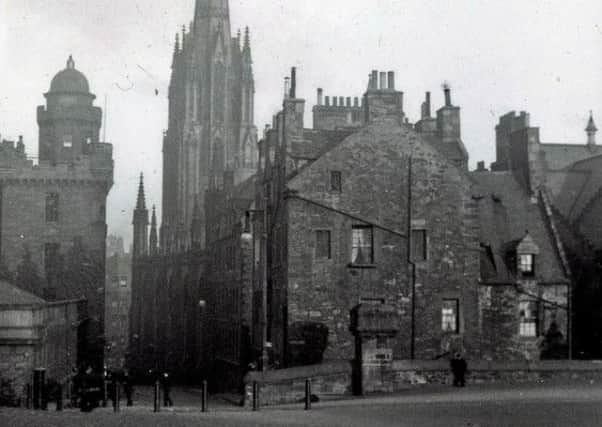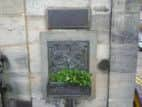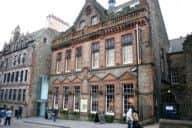Lost Edinburgh: A brief tour of Castlehill
This article contains affiliate links. We may earn a small commission on items purchased through this article, but that does not affect our editorial judgement.


This short, steep, narrow thoroughfare forms the summit of Edinburgh’s historic highway: the Royal Mile. It was once separated from the Castle itself by a deep ravine which was eventually bridged by the Esplanade in 1753.
Over the centuries, Castlehill has played many different roles for the citizens of Edinburgh. It has been a place of residence and education, a site for processions and witch burnings; a hub of worship and entertainment, and even a source of clean drinking water. The history of Castlehill is as rich as the Royal Mile is long.
The Witches Well
Advertisement
Hide Ad

A plaque on the drinking fountain attached to the west wall of the Tartan Weaving Centre at the top of Castlehill reveals a shocking fact about the area. Hundreds of witches were once tried close to this very spot. In fact, more people (mainly women) were burned for witchcraft on Castlehill than anywhere else in Scotland. A simple ‘dooking’ test was devised to determine who was guilty of such crimes down by the banks of the Nor’ Loch. If, after dooking, you failed to perish by drowning, you were deemed without question to be guilty of witchery and would then be tried on the stake at Castlehill. Not exactly a win-win situation. The ‘witches well’ was erected in 1894 and features a bronze relief of witches’ heads entwined by a snake.
The reservoir
The large building containing the aforementioned Tartan Weaving Centre was completed in 1851 as the city reservoir, replacing an earlier 17th century structure. Lead pipes channelled 135,000 gallons of drinking water direct from Comiston Springs into the city for over 150 years until it closed in 1992. The building was converted into its current guise in 1996.
Cannonball House


This rather quaint-looking building dates from 1630 and is famous for the cannonball which protrudes from its gable end. Local tour guides might tell you that it was embedded into the wall during the Jacobite siege of 1745. However, a far more likely, albeit significantly less romantic, explanation is that the cannonball was knowingly placed by city engineers to mark the gravitational height for the reservoir on the opposite side of the street. Cannonball House stands at the top of Castle Wynd, a steep set of stairs which once ran continuously down to the Grassmarket prior to the creation of Johnston Terrace in the 1830s.
Castlehill School
Built on the site of 17th century Brown’s Court and several prominent tenements, Castlehill School opened in 1888. In its heyday, up to 800 pupils were enrolled at the school – a large number when you consider the size of the building. Boys and girls both attended, but would have never crossed paths. Separate stair wells throughout the building made it all possible. To the rear facing Johnston Terrace, the building was partially open and supported by a series of stanchions. This allowed the children a larger playground area in what was a constricted space. Pupil numbers remained fairly steady for the first fifty years but dipped dramatically to less than 350 following WWII. The school was soon deemed surplus to requirements by the education authorities, and Castlehill Primary closed in 1951.
Today the building is better known for alcohol than algebra as the home to the world’s largest collection of Scotch whisky. With approximately half a million visitors passing through its doors every year, the Scotch Whisky Experience is one of the capital’s premier tourist attractions. The interactive guided tour and barrel car ride, telling the story of 300 years of whisky production, are well worth the entrance fee. Former classrooms have been transformed into cosy restaurant and bar areas where you can enjoy Scotland’s favourite tipple.
Camera Obscura and Outlook Tower
In 1855, a former town mansion underwent massive alterations to become the new observatory of Maria Theresa Short. Short’s Observatory featured a variety of bizarre-sounding visitor attractions including ‘a powerful galvanic machine which gives shocks of any power, a Fairy Fountain of Electric Water and a Wonderful Electric Boy’. The centrepiece, however, was the Camera Obscura: a series of mirrors which reflected crystal clear images of the streets below on to a round screen within a darkened chamber.
Advertisement
Hide AdIn 1892 the building was purchased by influential town planner and sociologist, Patrick Geddes, who intended to transform it into a ‘place of outlook and a type-museum as a key to a better understanding of Edinburgh and its region, but also to help people get a clear idea of its relation to the world at large’. Geddes renamed the building ‘Outlook Tower’ in keeping with his vision.
The Camera Obscura, Edinburgh’s oldest purpose-built tourist attraction, remains popular to this day. It is twinned with the World of Illusions.
The Hub
Advertisement
Hide AdAdjacent to the famous Witchery restaurant, stands the highest building in central Edinburgh: the Highland Tolbooth Kirk, or simply ‘the Hub’ as it is most commonly known.
The Hub was constructed in 1845 as the Victoria Hall and was initially intended to house the General Assembly of the Church of Scotland. With seating for 1,145, it was among the largest places of worship in the city. Renamed the Highland Tolbooth St John’s Church in 1956, the imposing kirk eventually fell into disuse in the early 1980s, before undergoing a transformation in 1999 into the vibrant events space which we know today.
The Hub leads on to the Lawnmarket, completing our brief tour of Castlehill.
SEE ALSO
• Visit Lost Edinburgh on their Facebook page, and follow them on Twitter @lostedinburgh